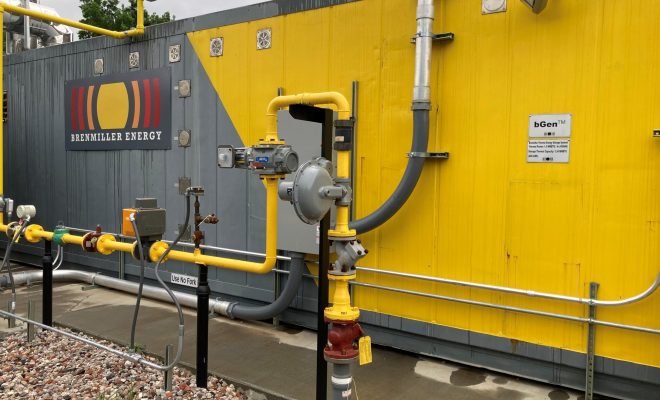Best of the Best Home Battery Storage Solutions 2026

Introduction: The Rise of Home Battery Storage
As the world shifts towards renewable energy sources, home battery storage solutions have become an essential component for energy independence and sustainability. By 2026, advancements in technology and increased demand for energy efficiency have led to a diverse range of battery storage options suitable for residential use. Homeowners are increasingly seeking ways to store energy generated from solar panels and other renewable sources, ensuring they can utilize that energy even when the sun isn’t shining. This article explores the best home battery storage solutions of 2026, highlighting features, benefits, and comparisons to help homeowners make informed decisions.
Home Battery Storage Solutions Overview: Understanding the Options
Home battery storage systems are designed to store energy for later use, allowing homeowners to reduce reliance on the grid, save on energy costs, and utilize renewable energy effectively. Various technologies are employed in these systems, including lithium-ion, lead-acid, and flow batteries. As of 2026, the following solutions represent the best options available on the market.
1. Tesla Powerwall 3: Leading the Charge
The Tesla Powerwall 3 continues to dominate the market with its advanced technology and user-friendly features.
Capacity: With a storage capacity of 13.5 kWh, the Powerwall 3 can power a typical home through the night, utilizing energy stored during the day.
Integration: Seamlessly integrates with solar panels and the Tesla app, providing real-time monitoring and control.
Efficiency: Offers a round-trip efficiency of 90% and can be scaled for larger homes or energy needs.
Pros:
– High storage capacity
– Easy integration with solar systems
– User-friendly app for monitoring
Cons:
– Premium pricing
– Requires professional installation
2. LG Chem RESU 10H: Versatile and Compact
The LG Chem RESU 10H is another popular choice for homeowners looking for a compact and efficient battery storage solution.
Capacity: With a capacity of 9.8 kWh, it is ideal for smaller homes or those with moderate energy needs.
Flexibility: The RESU 10H can be installed indoors or outdoors and is compatible with a wide range of inverters.
Efficiency: Known for its high efficiency, it also features a long lifespan, making it a reliable investment.
Pros:
– Compact design
– Flexible installation options
– High efficiency and long lifespan
Cons:
– Lower capacity than some competitors
– May require inverter upgrades for compatibility
3. Sonnen Eco: Eco-Friendly Innovation
Sonnen, a German manufacturer, offers the Eco battery storage solution, which emphasizes sustainability and energy independence.
Capacity: Available in multiple capacities ranging from 5 kWh to 15 kWh, the Sonnen Eco can cater to various energy needs.
Smart Technology: Features advanced energy management software that optimizes energy usage based on consumption patterns.
Sustainability: Made with eco-friendly materials, the Sonnen Eco is designed to have a minimal environmental impact.
Pros:
– Multiple capacity options
– Smart energy management capabilities
– Eco-friendly design
Cons:
– Higher initial investment
– Limited availability in some regions
4. Enphase Encharge: Modular and Scalable
The Enphase Encharge system stands out due to its modular design, allowing homeowners to scale their battery storage as needed.
Capacity: Each Encharge unit provides 3.4 kWh of storage, and homeowners can connect multiple units for increased capacity.
Integration: Works seamlessly with Enphase solar systems, providing a comprehensive energy solution.
User Control: The Enphase app allows users to monitor energy production and usage in real-time.
Pros:
– Modular design for scalability
– Excellent integration with Enphase solar systems
– Real-time monitoring through the app
Cons:
– Requires multiple units for larger capacity
– Slightly higher installation complexity
5. Generac PWRcell: Power and Reliability
Generac has long been known for its backup generators, and the PWRcell system extends this reliability to battery storage.
Capacity: The PWRcell offers a modular design with a base capacity of 8.6 kWh, expandable up to 34 kWh with additional modules.
Backup Power: Provides reliable backup power during outages, ensuring essential appliances remain operational.
User-Friendly: The system is designed for easy installation and user management through a straightforward app.
Pros:
– High capacity and modularity
– Reliable backup power capabilities
– User-friendly design
Cons:
– Larger footprint compared to others
– Initial costs may be high for full capacity
Comparative Analysis: Choosing the Right Solution
When selecting a home battery storage solution, it is essential to consider several factors, including capacity, efficiency, integration, and cost.
Capacity: Homeowners must assess their energy needs, as some solutions offer higher capacities suitable for larger homes while others are ideal for smaller applications.
Efficiency: Look for systems with high round-trip efficiency to maximize energy savings.
Integration: Compatibility with existing solar systems can significantly enhance the benefits of battery storage, making it easier to manage energy consumption.
Cost: While some systems may have a higher upfront cost, the long-term savings on energy bills and potential grid independence should factor into the decision.
Emerging Trends in Home Battery Storage: What to Expect
As we move further into 2026, several trends are emerging in the home battery storage market that homeowners should be aware of.
Smart Home Integration: The future of home battery storage is increasingly linked with smart home technology. Many battery systems now offer compatibility with smart home devices, allowing for enhanced energy management and automation, which can lead to additional savings.
Increased Lifespan: Manufacturers are focusing on improving the lifespan of battery systems. Many new models are now offering warranties of 10 years or more, indicating a trend toward longer-lasting solutions.
Recycling Initiatives: As battery technology advances, so does the need for sustainable disposal. Companies are investing in recycling programs to ensure that old batteries are disposed of responsibly, minimizing environmental impact.
Final Verdict: Investing in the Future of Energy
As we move into 2026, investing in a home battery storage solution is more than just a choice for convenience; it is a step towards energy independence and sustainability. The best options available, including the Tesla Powerwall 3, LG Chem RESU 10H, Sonnen Eco, Enphase Encharge, and Generac PWRcell, each offer unique features tailored to different needs and preferences.
Homeowners should carefully evaluate their energy consumption patterns, budget, and future goals when selecting a battery storage system. With the right choice, individuals can harness the power of renewable energy and contribute to a more sustainable future, all while enjoying the benefits of energy independence. The growing innovations and trends in battery technology also promise exciting advancements, ensuring that home battery storage will play a critical role in the energy landscape for years to come.




